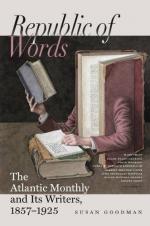“He happened one day to enter a house, where he found two young females engaged in needlework, which seemed to occupy their whole attention. He addressed them, but received no answer. Somewhat surprised at this, he repeated his question; but still there was no reply; they did not even lift their eyes from the work before them. In the midst of the Abbe’s wonder at this apparent rudeness, their mother entered the room, and the mystery was at once explained. With tears she informed him that her daughters were deaf and dumb; that they had received, by means of pictures, a little instruction from Father Farnin, a benevolent ecclesiastic of the order of “Christian Brothers,” in the neighborhood; but that he was now dead, and her poor children were left without any one to aid their intellectual progress.—’Believing,’ said the Abbe, ’that these two unfortunates would live and die in ignorance of religion, if I made no effort to instruct them, my heart was filled with compassion, and I promised, that, if they were committed to my charge, I would do all for them that I was able.’”
It was in 1755 that the Abbe de l’Epee thus entered upon his great mission. Six years before, Jacob Rodriguez de Pereira had come from Spain, and exhibited some deaf and dumb pupils whom he had taught, before the Academy of Sciences. They were able to speak indifferently well, and had attained a moderate degree of scientific knowledge. Pereira himself was a man of great learning, of the most agreeable and fascinating manners, and possessed, in a high degree, that tact and address in which the Spanish Jews have never been surpassed. He soon made a very favorable impression upon the court, and led a pleasant life in the society of the literary men of the age. During his residence in France, he taught some five or six mutes of high rank to speak and to make considerable attainments in science,—charging for this service most princely fees, and at the same time binding his pupils to perfect secrecy in regard to his methods, which it was his intention to bequeathe to his family. This intention was thwarted, however, soon after his death, by a fire which destroyed nearly all his papers, and to this day his method has remained a secret, unknown even to his children. It is certain, however, that he made no use of the sign-language, though there is some evidence that he invented and practised a system of syllabic dactylology. Of this, the only successful effort which, up to that time, had been made in France, to teach deaf-mutes, it is obvious that De l’Epee could have known nothing, save the fact that it demonstrated the capacity of some of this class to receive instruction. It is, indeed, certain, from his own statements, that, at the time of commencing his labors, he had no knowledge of any works on the subject. He had somewhere picked up the manual alphabet invented by Bonet in 1620; and in subsequent years he derived some advantages from the works of Cardan, Bonet, Amman, Wallis, and Dalgarno.




